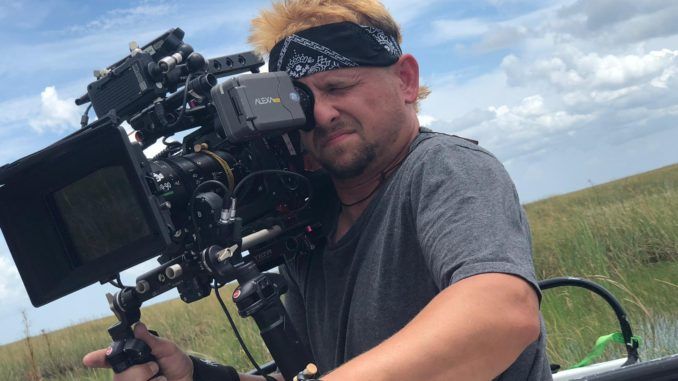
Tell us a little about your background, before Girl Upstairs.
I became a cinephile later in my life. Growing up I played sports and enjoyed staying busy. It wasn’t until college I discovered how much I truly love cinema. I studied film at a great time, because it was the beginning of the digital age. So I shot some films early on in my career with the Canon XL2 and Panasonic HVX200 cameras. However, during that time, my teacher encouraged me to shoot with a super 8 film camera, which really gave me the confidence that I can make this a career. Shooting on film was never in my plans, but I discovered it wasn’t that expensive to develop the film and digitize it. So after making two short films in black and white, it dawned on me that I was a filmmaker at that point. I was still young and never submitted to film festivals, which I regret, but thinking about it now, I may go ahead and revisit the past and submit it to a few festivals.
“After making two short films in black and white, it dawned on me that I was a filmmaker.”
After graduating college, I was fortunate enough to land a job as an in-house editor which taught me a lot about the five c’s in cinematography. Camera composition, angles, cutting, closeups, and continuity. And I’d like to add a 6th C, coverage. After this company closed its doors, I decided to become a videographer and DP full-time. This was an easy transition that lead me to acquiring camera and lighting gear, in hopes of the achieving the end goal, to direct films. And now, four feature films later, I”m here promoting my latest picture, Girl Upstairs which will premiere at the infamous film festival Dances with Films.
How did you get involved in the film?
This project was a passion project designed to explore the consciousness of the human mind. I was always inspired by the philosopher Slavoj Zizek, and strived to focus on the inner being, most notably the Freudian Theory and the psycho-analysis of the ego, superego, and id. So, I came up with the concept that revolves around the 3 stages of the consciousness. This concept was inherently related to my personal struggles dealing with isolation, becoming a husband and a dad. And so I dug deep into my personal truths to find the most insecure feelings, and out came this movie, which was brought to life with he partnership from John Gee, who was instrumental in giving myself and the rest of the cast and crew clarity on the subject. He has a profound sense of literature and knowledge we all depended on to understand the story and script.
With a small cast and almost single location, it feels like a COVID-era production. To what extent was that the case?
Yes, I know, it does feel like a COVID production. But we actually filmed this one year before the lockdown. It was a little ahead of its time in that respect. But it really hindered our ability to release the film in a timely manner. Film festivals were postponed, which forced me to put the movie on the shelf until festivals became live, in-person events again.
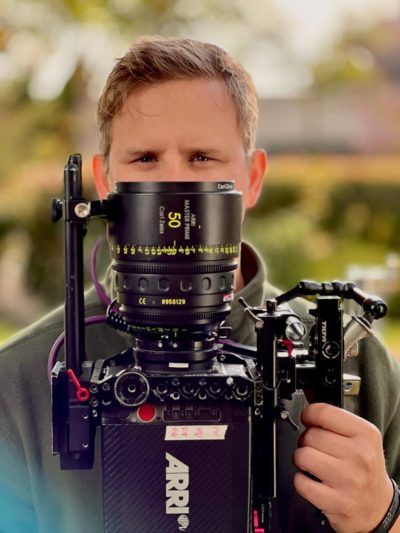 Casting must have been very important. Can you walk us through that process?
Casting must have been very important. Can you walk us through that process?
After looking at over 500 in person auditions, we were lucky to discover Holly Blair and Luiz Gustavo Cintra. They brought a lot of their own personal trauma into the filming, and I can’t thank them enough for bringing the characters to life in such a profound way. I could really feel the heaviness on some of the takes, and it elevated the crew’s performance too. The third character was played by Sara Catherine Bellamy, who acted in 2 of my other films, so we had a history filming together. In retrospect, I regret not casting for that character. I believe actors should earn the role, not be given it. And this could be a discussion for another time, hehe…
On the same topic, to what extent did you look for chemistry between the three leads?
I wasn’t interested in their chemistry, because I didn’t feel like the story depended on it. The characters are essentially strangers, or foreign to each other.
How did the production go?
Production was difficult. We were filming in a dilapidated loft that was situated directly above a movie theatre. And it was filthy, so we spent several days cleaning it up. And furnishing the space took another few days sources everything through Offer Up and Craigslist to find free or cheap sofas, bathtubs, refrigerators, lamps, beds, and everything else. But it was worth it because the space really came to life, and became a character in the movie. With the help from the production designer, Ian Boyd, and the rest of the crew, it turned into a loft dripping with character that really popped off the screen.
It feels almost like three different movies. A psychological drama when Dulce is alone; a romance after Webster arrives; then a horror film once Mimi shows up. Was that conscious? Did you deliberately approach those segments in different ways?
Yes, actually I always intended it to switch genres multiple times. However, the romance was supposed to be a lot more erotic. The relationship between Dulce and Webster was supposed to be a lot more graphic in nature. Unfortunately, the setting and budget didn’t allow for that to happen.
I got a distinct Frankenstein vibe, especially in the middle, and even a little Hitchcockian Rear Window feel. Did those influence you, and/or what else was?
Hmm, I can see the similarity with Frankenstein, but no – it was never a conscious decision to draw inspiration from Mary Shelley’s Frankenstein. That’s an interesting comparison though. Rear Window was a favorite of mine, and I think I drew from that film indirectly. But you are spot on with the vintage vibe. I was aiming for a 60’s or 70’s vibe, so we used vintage lenses and stopped the aperture down to a T/11 to give it a more film-like feel, with a deeper focal depth, allowing the viewer to take in the background. That and a higher ISO to allow the grain to be more noticeable all contributed to a more vintage feel.
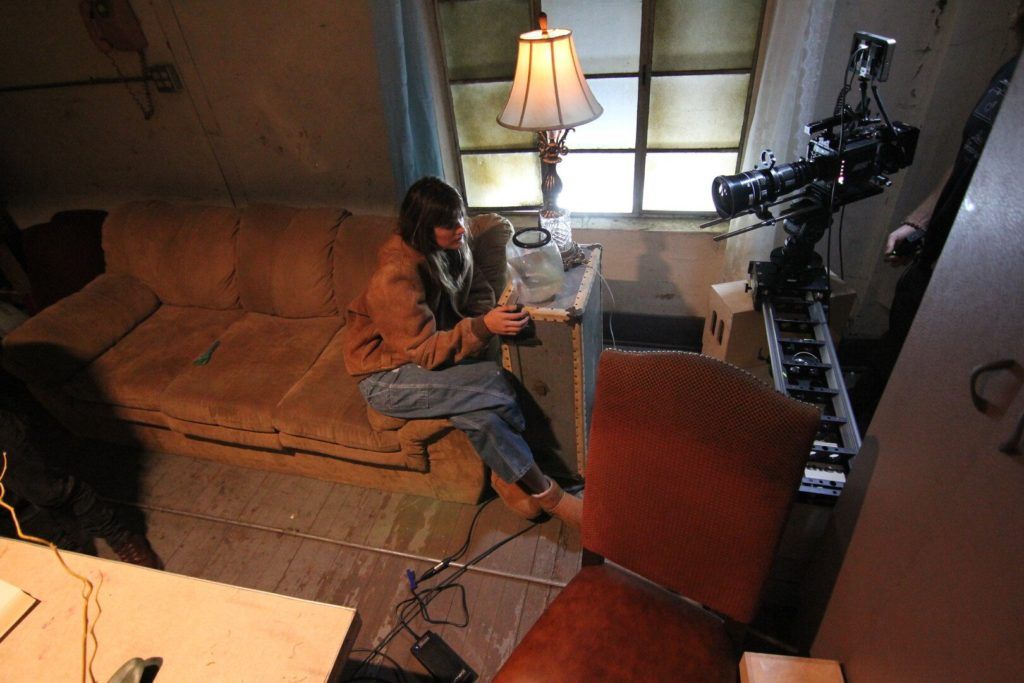 I noticed the title was originally Cuddle Buddies, which suggests a different tone originally. Was that the case? How else did the film change from concept to finished item?
I noticed the title was originally Cuddle Buddies, which suggests a different tone originally. Was that the case? How else did the film change from concept to finished item?
Nice catch. The original working title was Cuddle Buddies. And like I said earlier, it was initially created to be an erotic thriller, where Dulce creates Webster to be her lover, and Mimi appears creating a love triangle that turns deadly. But since we didn’t achieve the eroticism we hoped for, I changed the title to something more fitting.
What elements of the film are you most proud of?
Although I wouldn’t give myself credit for the acting, I’m truly fond of the performances Holly Blair, Gustavo Cintra, and Catt Bellamy gave. In addition, I love how the set design turned out.
“If I could improve anything, I would add some nudity in the film.”
Conversely, nobody is more critical than the film-maker! So if you had the chance for a do-over, what would you change?
If I could improve anything, I would add some nudity in the film. I feel like it has a European vibe, and without the nudity, it falls a little flat. In addition, I wish we had more scenes with Catt Bellamy. We introduce her a little too late and the film would benefit giving her more screen time.
What projects are you working on next?
I’m currently developing a couple projects. A dystopian sci-fi political drama called Short Fuse. It’s about a young man from the slums and joins a group of revolutionaries who attempt to stop the mandatory military draft by bombing political headquarters around the state.
Aside from this project, I’m working on helping local filmmakers in LA create their own vision. I assist by working as crew and providing the camera and lighting equipment.
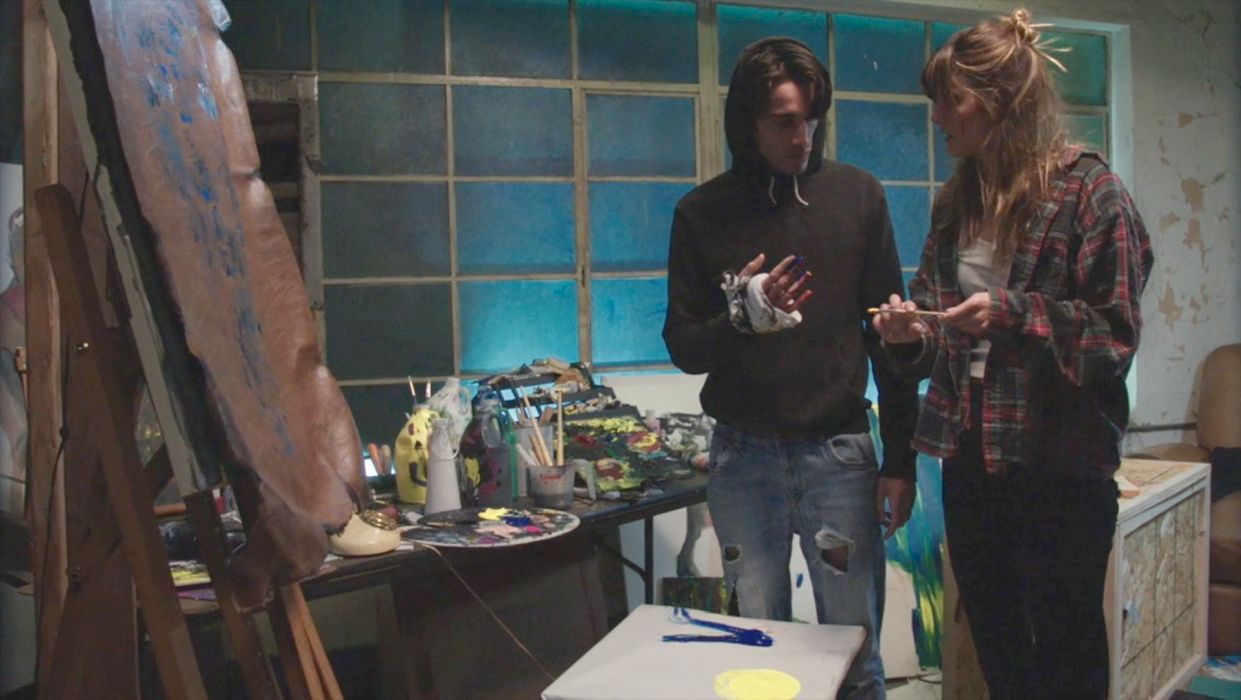
Girl Upstairs (2024)
Rating: B
Dir: Kevin Stevenson
Star: Holly Blair, Gustavo Cintra, Sara Catherine Bellamy
a.k.a. A Girl Upstairs
This is probably one of those films where you’re best going in, with as little information as possible. Skip the trailer. Ideally, don’t read the synopsis. Because the less you know, the more the resulting journey is going to be a pleasant surprise. We’ll wait for you here. The rest of the review will contain… well, not exactly “spoilers”. Let’s just say, information that might be more fun for the film to tell you, rather than me.
All good? Okay. Dulce (Blair, occasionally giving off young Nastassja Kinski vibes) is an artist with severe agoraphobia, due to a childhood incident. She’s now a shut-in, unable to leave her apartment. But she still works, the only human contact being phone calls to her agent, who also arranges for deliveries of art supplies. From afar, she watches a man who runs a screening room nearby, and is devastated when she discovers he has a girlfriend. At her agent’s suggestion, she paints his picture on some recently received vellum canvas, and this is where things go off track. To this point, it had been your typical “artist quietly going slowly mad” scenario. Blair was decent enough, though it’s really hard for any actor to carry a film as solo as needed here. She’s almost the only person on screen for the first thirty-five minutes, and there’s just so much painting I can watch [unless it’s of a naked Emmanuelle Beart in La Belle Noiseuse, in which case, I’m packing a lunch].
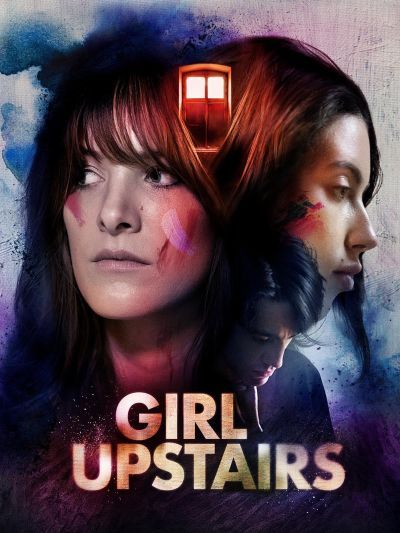 What happens is: her painting comes to life. Once Dulce has got over the shock of a nude man (Cintra) appearing in her apartment, we enter an entirely different movie. I did not see this coming, but it’s weirdly similar to Lisa Frankenstein – only far less smug and self-centred. In bothm a woman “makes” a male companion, and then has the task of shaping the raw clay of her creation into whatever she wants. In Lisa, it was basically a fuck buddy. Here, the role of Webster – named after the dictionary – is more to fill Dulce’s emotional needs for human contact. Just because you don’t want to go out, doesn’t make you a hermit, after all. It’s a novel twist on the meet cute, and gives proceedings a whole new and interesting direction in which to work.
What happens is: her painting comes to life. Once Dulce has got over the shock of a nude man (Cintra) appearing in her apartment, we enter an entirely different movie. I did not see this coming, but it’s weirdly similar to Lisa Frankenstein – only far less smug and self-centred. In bothm a woman “makes” a male companion, and then has the task of shaping the raw clay of her creation into whatever she wants. In Lisa, it was basically a fuck buddy. Here, the role of Webster – named after the dictionary – is more to fill Dulce’s emotional needs for human contact. Just because you don’t want to go out, doesn’t make you a hermit, after all. It’s a novel twist on the meet cute, and gives proceedings a whole new and interesting direction in which to work.
Then there’s the final act, where Dulce does another painting on the magical (or, perhaps, cursed?) vellum, this time bringing Mimi (Bellamy) to life. And the dynamic changes again, for Mimi is neither as malleable as Webster, nor as empathetic. The old saying, “Two’s company, three’s a crowd” should give you some idea of how things are going to go down, heading into more traditional horror territory. Then again, do Frankenstein-adjacent stories ever have a happy ending? By the time the credits roll, you’ll look back and might feel a long way from “artist quietly going slowly mad”. Or maybe not. Either way, this is a fine example of how to work with smaller resources, and still deliver a film that is capable of sneaking up on the viewer and surprising them.
Girl Upstairs is now available on Tubi.
